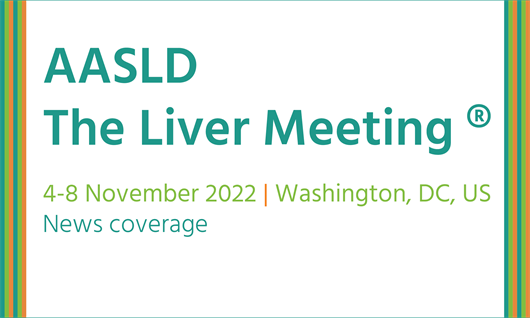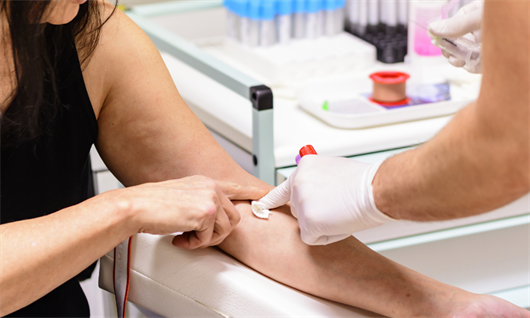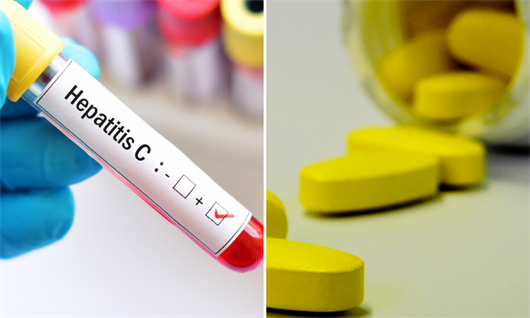Having trouble reading this email? View it in your browser
| |
November 2022 | |
News from the AASLD Liver Meeting, Washington, DC
This month's bulletin highlights the key news from The Liver Meeting, the annual conference of the American Association for the Study of Liver Diseases (AASLD), which was held from 4-8 November in Washington, DC. Sadly, this is the last infohep bulletin and the last news reporting from infohep. The funders of infohep have chosen to redistribute funds towards other ongoing or emerging health conditions and NAM is unable to support infohep as an ongoing standalone resource. NAM aidsmap will continue to report stories on hepatitis and HIV co-infection. The collection of information and new stories that infohep has generated will remain accessible. We would like to thank all those who have supported this site with expertise and reporting, especially Ingo van Thiel of Deutsche Leberhilfe e.V. and Liz Highleyman, and our translation partners. Only 11 countries on target to eliminate hepatitis C by 2030
Ronald Rampsch/Shutterstock.com Only 11 countries are on course to meet their goals for elimination of hepatitis C by 2030, while five countries with the highest burdens of hepatitis C are unlikely to achieve elimination before 2050, Sarah Blach of the Center for Disease Analysis Foundation reported at the meeting. The countries currently on track to reach the 2030 targets are Australia, Canada, Denmark, Egypt, Finland, France, Georgia, Japan, Norway, Spain and the United Kingdom. Concerningly, China, India, Pakistan, Brazil and the United States are each set to achieve the critical targets for hepatitis C elimination after 2050, according to projections and plans analysed by the Center for Disease Analysis Foundation. Related linksSimplified tenofovir regimen as effective as recommended preventive treatment in pregnant women with hepatitis B
Anastasiia Chepinska/Unsplash A simplified regimen for the prevention of mother-to-child transmission of hepatitis B was just as effective as the standard preventive regimen in pregnant women with very high virus levels and is likely to prove easier to implement in resource-limited settings, Professor Calvin Pan of New York University Grossman School of Medicine reported at the meeting. The study compared the efficacy of earlier treatment during pregnancy with the antiviral tenofovir, without hepatitis B immunoglobulin for the infant after delivery, versus the standard recommended preventive regimen, tenofovir from week 28 of pregnancy and postpartum hepatitis B immunoglobulin. All infants in the study received three doses of hepatitis B vaccine. The study found no significant difference between study arms in the rate of vertical transmission to infants. Women who received tenofovir from week 14-16 of pregnancy had significantly lower hepatitis B DNA levels at the time of delivery than women in the standard-of-care arm. Related linksSome people remain at risk for liver cancer after being cured of hepatitis CPeople who are cured of hepatitis C with direct-acting antiviral therapy have a much lower risk for liver cancer. The likelihood of developing liver cancer after successful treatment declines over time, but some people remain at risk and can benefit from screening, especially those with liver cirrhosis, researchers reported at the meeting. Studies presented at the Liver Meeting showed:
Related linksUK community test-and-treat service achieves high hepatitis C cure rate in people who use drugs
Jarun Ontakrai/Shutterstock.com/Pexels Offering hepatitis C testing and treatment through a community drugs and alcohol service led to high uptake of testing and treatment among current and former injecting drug users, as well as a high cure rate, Professor Sumita Verma of Brighton and Sussex Medical School reported at the meeting. Treatment uptake in this study was high, with 75% of HCV RNA positive patients receiving antiviral therapy. Treatment response was not affected by homelessness, current drug use or alcohol use, demonstrating that hepatitis C treatment can be taken successfully by people with unstable living situations who are substance users, challenging preconceptions that this group is hard to treat. Of those who started direct-acting antiviral treatment, 86% were cured of hepatitis C. The likelihood of being cured was not affected by cirrhosis, genotype or any demographic factor, including homelessness, current injecting drug use, current alcohol use or psychiatric diagnosis. Related linksSevere acute hepatitis in children still does not have a definitive cause
Rawpixel.com/Shutterstock.com Clusters of unexplained acute hepatitis among children have declined from their peak in early summer, but a small number of cases are still being reported, and a singular definitive cause still has not been identified, according to a presentation at the meeting. An analysis of 151 cases reported from 25 sites around the world failed to find a single viral infection in common in all cases. Numerous children had multiple viral infections. Related linksBepirovirsen treatment leads to sustained loss of hepatitis B markers for up to one in fiveUp to one in five people with hepatitis B treated with the experimental antiviral bepirovirsen achieved a sustained loss of hepatitis B surface antigen (HBsAg) and HBV DNA, investigators from the B-CLEAR study reported at the meeting. HBsAg loss was associated with lower HBsAg levels before starting bepirovirsen treatment, suggesting that this drug is likely to be suitable for a subset of people with hepatitis B. Bepirovirsen (GSK-3228836) is an antisense oligonucleotide, a chain of nucleic acid designed to cut hepatitis B RNA, preventing the transcription of viral proteins. Related linksVIR-2218 combined with monoclonal antibody or pegylated interferon delivers potent suppression of hepatitis BThe experimental hepatitis B antiviral VIR-2218 shows potent activity against the virus when combined with either a monoclonal antibody, or pegylated interferon, two studies presented at the meeting found. VIR-2218 is an antisense silencing RNA, a chain of nucleic acid designed to cut hepatitis B RNA and prevent the production of new viral proteins. VIR-3434 is a monoclonal antibody that prevents hepatitis B entry to hepatocytes, stimulates T-cell responses to hepatitis B virus and promotes clearance of hepatitis B surface antigen from the bloodstream. The studies were designed to assess whether the various combinations of experimental treatment could reduce hepatitis B surface antigen levels or clear hepatitis B surface antigen from the blood. Loss of hepatitis B surface antigen and loss of antibodies to hepatitis surface antigen are indicators of a functional cure, meaning that the hepatitis B virus is no longer replicating and it is controlled without treatment. The MARCH study evaluated three combinations of VIR-2218 and VIR-3434 in 40 people receiving nucleoside or nucleotide analogue treatment. While no person in this study achieved HBsAg loss, which would be a sign of functional cure, the majority achieved reductions of HBsAg below 10 IU/ml. The second study evaluated VIR-2218 as a single drug or in different combinations with pegylated interferon, in 79 people receiving NA treatment who had low HBV DNA levels and detectable HBsAg. A longer duration of VIR-2218 with pegylated interferon achieved HBsAg clearance in 7 out of 31 people at week 48 of treatment. Shorter treatment durations were less successful and only achieved this goal in 1 out of 48 people. Related links | |
 Latest treatment news and information for patient advocates and people working in hepatitis in Europe. For more details, please contact: To unsubscribe please click here Privacy Policy |







Connect with infohep on Facebook: Keep up to date with all the latest news and developments.
Follow infohep on Twitter for links to news stories and updates from infohep.org. Follow us at www.twitter.com/infohep.
Follow all the infohep news by subscribing to our RSS feeds.